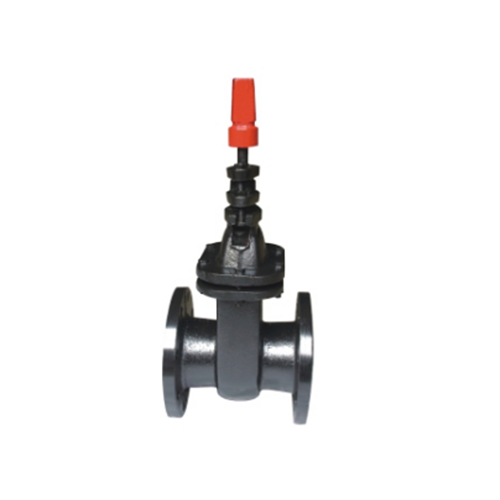
Stop Valve Price Trends and Buying Guide
Introduction
Stop valves, also known as isolation valves, are essential components in plumbing, industrial, and commercial systems. They control the flow of liquids or gases by allowing or blocking passage through pipes. With various types available—such as gate valves, globe valves, ball valves, and butterfly valves—selecting the right stop valve requires understanding market trends, pricing factors, and key purchasing considerations.
This guide explores the latest price trends in the stop valve market, factors influencing costs, and essential tips for making an informed purchase.
---
1. Stop Valve Price Trends in 2024
The global stop valve market is influenced by raw material costs, manufacturing processes, demand fluctuations, and geopolitical factors. Below are the key trends affecting prices in 2024:
1.1 Impact of Raw Material Costs
- Stainless Steel & Brass Prices: Stainless steel and brass are the most common materials for stop valves. In 2024, prices have remained volatile due to supply chain disruptions and increased demand in construction and industrial sectors.
- Copper & Iron Fluctuations: Copper prices have risen due to mining shortages, while cast iron valves remain more stable but are affected by energy costs in production.
1.2 Manufacturing and Labor Costs
- Rising labor costs in manufacturing hubs (e.g., China, India, and Europe) have led to higher production expenses.
- Automation in valve manufacturing helps reduce costs but requires significant initial investment.
1.3 Supply Chain and Logistics
- Shipping delays and fuel price hikes continue to impact valve distribution costs.
- Local manufacturing is becoming more attractive to avoid import tariffs and long lead times.
1.4 Demand in Key Industries
- Oil & Gas: High demand for durable valves in refineries and pipelines keeps prices elevated.
- Water Treatment & HVAC: Growing infrastructure projects increase demand for cost-effective valves.
- Renewable Energy: Solar and wind power plants require specialized valves, influencing niche market pricing.
1.5 Regional Price Variations
- North America & Europe: Higher labor and compliance costs lead to premium pricing.
- Asia-Pacific: Competitive pricing due to large-scale production, but quality varies.
- Middle East & Africa: Prices fluctuate based on oil industry demand and import dependencies.
---
2. Factors Affecting Stop Valve Prices
When purchasing stop valves, several factors influence pricing:
2.1 Material Type
- Brass Valves: Moderate cost, corrosion-resistant, suitable for water systems.
- Stainless Steel Valves: Higher cost, excellent durability, ideal for harsh environments.
- PVC Valves: Low cost, lightweight, used in low-pressure applications.
- Cast Iron Valves: Affordable but prone to rust; used in industrial settings.
2.2 Valve Type
- Gate Valves: Generally cheaper but slower operation.
- Ball Valves: More expensive due to quick shut-off and durability.
- Globe Valves: Higher precision but costlier than gate valves.
- Butterfly Valves: Cost-effective for large pipelines but less durable under high pressure.
2.3 Size and Pressure Rating
- Larger valves (2" and above) cost more due to material usage.
- High-pressure valves (PN16, PN25, etc.) require stronger materials, increasing price.
2.4 Brand and Certification
- Reputable brands charge a premium for quality assurance.
- Certifications (ISO, API, CE) add to costs but ensure reliability.
2.5 Customization and Special Features
- Anti-corrosion coatings, fire-safe designs, and automation (actuated valves) increase prices.
---
3. How to Buy Stop Valves: A Step-by-Step Guide
3.1 Determine Your Requirements
- Application: Identify whether the valve is for water, gas, oil, or chemicals.
- Pressure & Temperature: Choose a valve rated for your system’s conditions.
- Connection Type: Flanged, threaded, or welded ends affect compatibility.
3.2 Select the Right Valve Type
- For On/Off Control: Ball valves or gate valves.
- For Flow Regulation: Globe valves or needle valves.
- For Large Pipelines: Butterfly valves.
3.3 Compare Materials
- Water Systems: Brass or PVC.
- Corrosive Fluids: Stainless steel or PTFE-lined valves.
- High-Temperature Use: Forged steel valves.
3.4 Evaluate Suppliers
- Check supplier reviews, certifications, and lead times.
- Request samples or test reports for critical applications.
3.5 Consider Total Cost of Ownership
- Cheaper valves may require frequent replacements.
- Investing in high-quality valves reduces maintenance costs.
3.6 Negotiate Pricing and Bulk Discounts
- Bulk purchases (50+ units) often come with discounts.
- Compare quotes from multiple suppliers.
3.7 Check Warranty and After-Sales Support
- A good warranty (1-5 years) indicates confidence in product quality.
- Ensure spare parts are available for future repairs.
---
4. Future Price Predictions
- 2024-2025: Prices may stabilize if raw material costs decrease.
- Long-Term Trends: Automation and 3D printing could reduce manufacturing costs.
- Sustainability Impact: Eco-friendly materials may increase prices initially but could become cost-effective over time.
---
5. Conclusion
Stop valve prices are influenced by material costs, manufacturing processes, and industry demand. Buyers should assess their needs carefully, compare suppliers, and prioritize quality over the lowest price. By understanding market trends and key purchasing factors, businesses and individuals can make cost-effective decisions without compromising performance.
Investing in durable, certified valves ensures long-term reliability, reducing downtime and maintenance expenses. Stay updated on market trends to make informed purchases in this evolving industry.
---
This guide provides a comprehensive overview of stop valve pricing and purchasing strategies. For specific applications, consulting with industry experts is recommended to ensure optimal valve selection.
Este sitio web utiliza cookies para garantizar que obtenga la mejor experiencia en nuestro sitio web.
Comentario
(0)